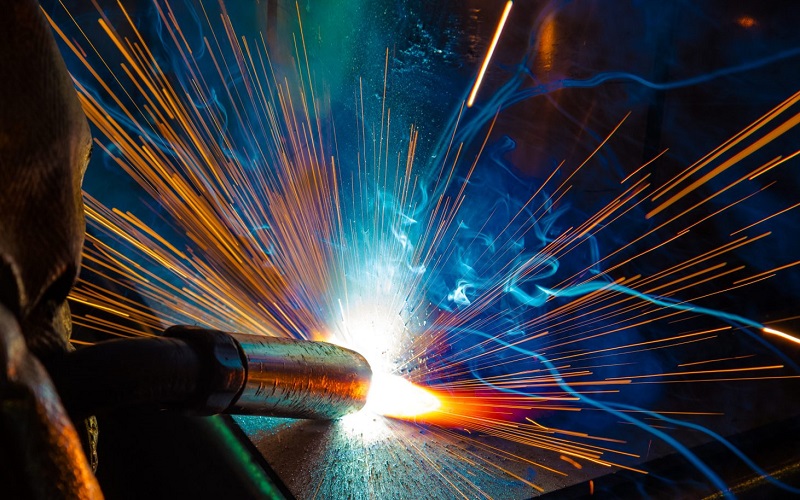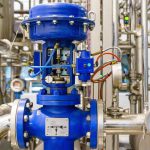Welding is a critical process in various industries for joining metals and thermoplastics. Different welding methods are used based on the materials, the environment, and the requirements of the specific application. Here’s an expert overview of the most common welding methods:
1. Shielded Metal Arc Welding (SMAW)
- Description: Also known as stick welding, SMAW uses a consumable electrode coated in flux to lay the weld. An electric current passes through the electrode, melting both the electrode and the workpiece to form the weld joint.
- Applications: Commonly used in construction, maintenance, and repair work. Suitable for welding iron, steel, and stainless steel.
- Advantages: Simple and versatile, works well in outdoor and windy conditions, minimal equipment required.
- Disadvantages: Produces slag that must be removed, relatively slow compared to other methods, requires skilled operation.
2. Gas Metal Arc Welding (GMAW)
- Description: Also known as MIG (Metal Inert Gas) welding, GMAW uses a continuous wire feed as the electrode and an inert gas (like argon) to protect the weld from contamination.
- Applications: Widely used in automotive, manufacturing, and fabrication industries for welding steel, stainless steel, and aluminum.
- Advantages: High welding speed, minimal post-weld cleaning, easy to learn and automate.
- Disadvantages: Sensitive to contaminants, not suitable for outdoor use without special precautions, equipment can be expensive.
3. Flux-Cored Arc Welding (FCAW)
- Description: Similar to GMAW, but uses a tubular wire filled with flux. Can be used with or without shielding gas, depending on the type of flux core.
- Applications: Common in heavy equipment manufacturing, shipbuilding, and construction for welding thick materials.
- Advantages: High deposition rate, good for welding in windy conditions, can weld thicker materials in a single pass.
- Disadvantages: Produces more smoke and fumes, slag removal required, more complex equipment setup.
4. Gas Tungsten Arc Welding (GTAW)
- Description: Also known as TIG (Tungsten Inert Gas) welding, GTAW uses a non-consumable tungsten electrode and an inert gas (like argon or helium) to shield the weld. A filler metal may or may not be used.
- Applications: Used for precise welding of thin materials, commonly in aerospace, automotive, and art metal work. Suitable for aluminum, magnesium, stainless steel, and other non-ferrous metals.
- Advantages: High-quality, clean welds, excellent control over the weld pool, no slag.
- Disadvantages: Slower welding process, requires a high level of skill, more expensive equipment.
5. Submerged Arc Welding (SAW)
- Description: Uses a continuously fed consumable electrode and a blanket of granular flux, which submerges the arc. This protects the weld from atmospheric contamination.
- Applications: Suitable for welding thick materials, often used in shipbuilding, pressure vessel manufacturing, and large structural components.
- Advantages: High deposition rate, deep weld penetration, minimal welding fumes and arc light exposure.
- Disadvantages: Limited to horizontal and flat positions, not suitable for thin materials, equipment is relatively large and complex.
6. Plasma Arc Welding (PAW)
- Description: Similar to GTAW, but uses a constricted arc to create a plasma jet, allowing for higher temperatures and greater control.
- Applications: Precision welding in aerospace and electronics, can weld a wide range of metals including titanium and high-alloy steels.
- Advantages: High precision and control, deep penetration, can weld in all positions.
- Disadvantages: Expensive equipment, requires high skill level, slower than some other welding methods.
7. Resistance Welding
- Description: Uses electric current and mechanical pressure to create heat and join metal pieces. Includes methods like spot welding, seam welding, and projection welding.
- Applications: Widely used in the automotive industry for joining sheet metals, in electronics for joining wires, and in manufacturing for mass production.
- Advantages: High production rate, minimal material distortion, consistent weld quality.
- Disadvantages: Limited to thin materials, high initial equipment cost, requires precise control of welding parameters.
8. Laser Beam Welding (LBW)
- Description: Uses a focused laser beam to melt and join materials. Can be performed in various atmospheres, including vacuum.
- Applications: Used in high-precision industries like aerospace, medical device manufacturing, and electronics.
- Advantages: High precision and speed, minimal heat-affected zone, can weld difficult-to-reach areas.
- Disadvantages: Very high equipment cost, requires precise alignment and control, safety concerns with laser use.
9. Electron Beam Welding (EBW)
- Description: Uses a focused beam of high-velocity electrons to melt and join materials. Typically performed in a vacuum chamber to prevent beam scattering.
- Applications: Used in aerospace, automotive, and nuclear industries for high-precision, deep welds.
- Advantages: Deep penetration, high precision, minimal distortion.
- Disadvantages: Extremely expensive equipment, requires a vacuum environment, limited to conductive materials.
10. Friction Stir Welding (FSW)
- Description: A solid-state welding process where a rotating tool generates frictional heat to soften and join materials without melting them.
- Applications: Used in aerospace, automotive, and shipbuilding industries for welding aluminum and other non-ferrous alloys.
- Advantages: High weld strength, minimal distortion, no filler material required.
- Disadvantages: Limited to materials with good thermal conductivity, slower process, specialized equipment required.
Factors Influencing the Choice of Welding Method
- Material Type and Thickness: Some methods are better suited for certain materials and thicknesses. For example, GTAW is excellent for thin metals, while SAW is ideal for thick sections.
- Welding Position: Some welding methods are more versatile in terms of the position they can be performed in (e.g., overhead, vertical).
- Production Volume: Methods like resistance welding are ideal for high-volume production, whereas methods like GTAW are better for low-volume, high-precision work.
- Cost and Equipment: The initial cost and complexity of equipment can influence the choice, especially for smaller operations.
- Skill Level: Some welding methods require more operator skill and experience (e.g., TIG welding) compared to others (e.g., MIG welding).
- Environmental Conditions: Methods like FCAW are suitable for outdoor conditions, whereas others like GMAW require controlled environments.
In summary, the choice of welding method depends on various factors including material properties, production requirements, cost considerations, and the specific application. Each method has its advantages and limitations, making it suitable for different scenarios in the industry.






Leave A Reply